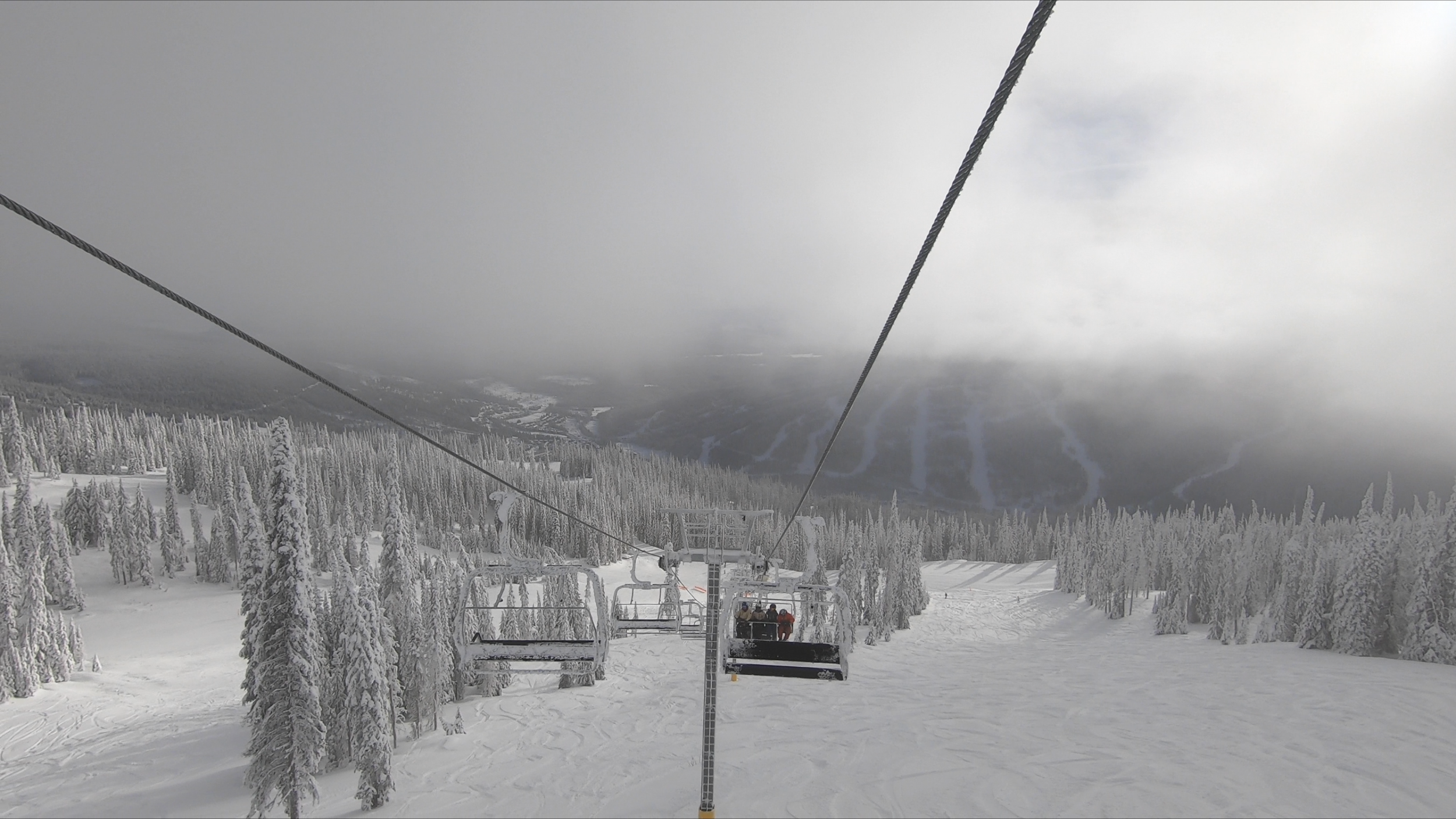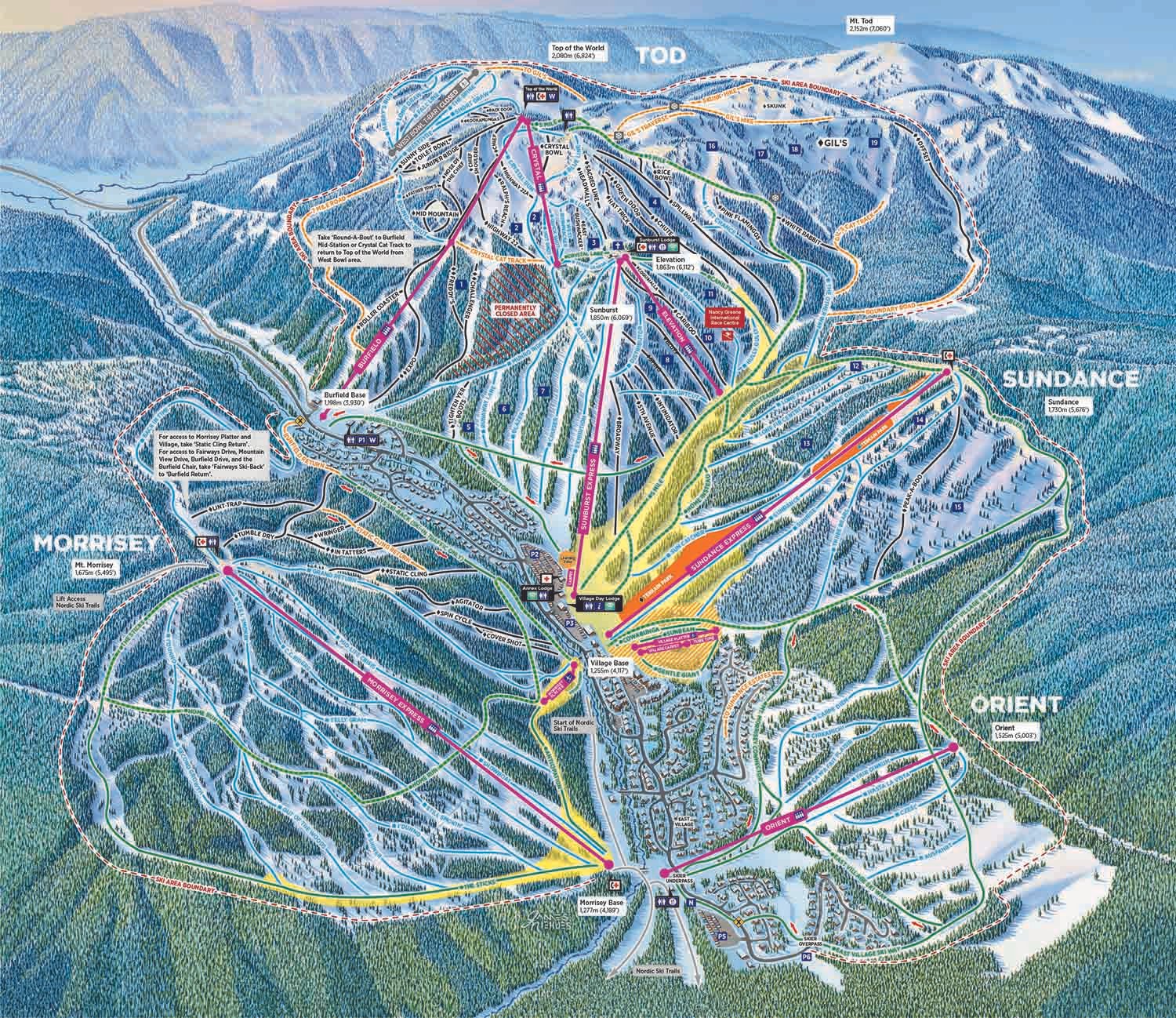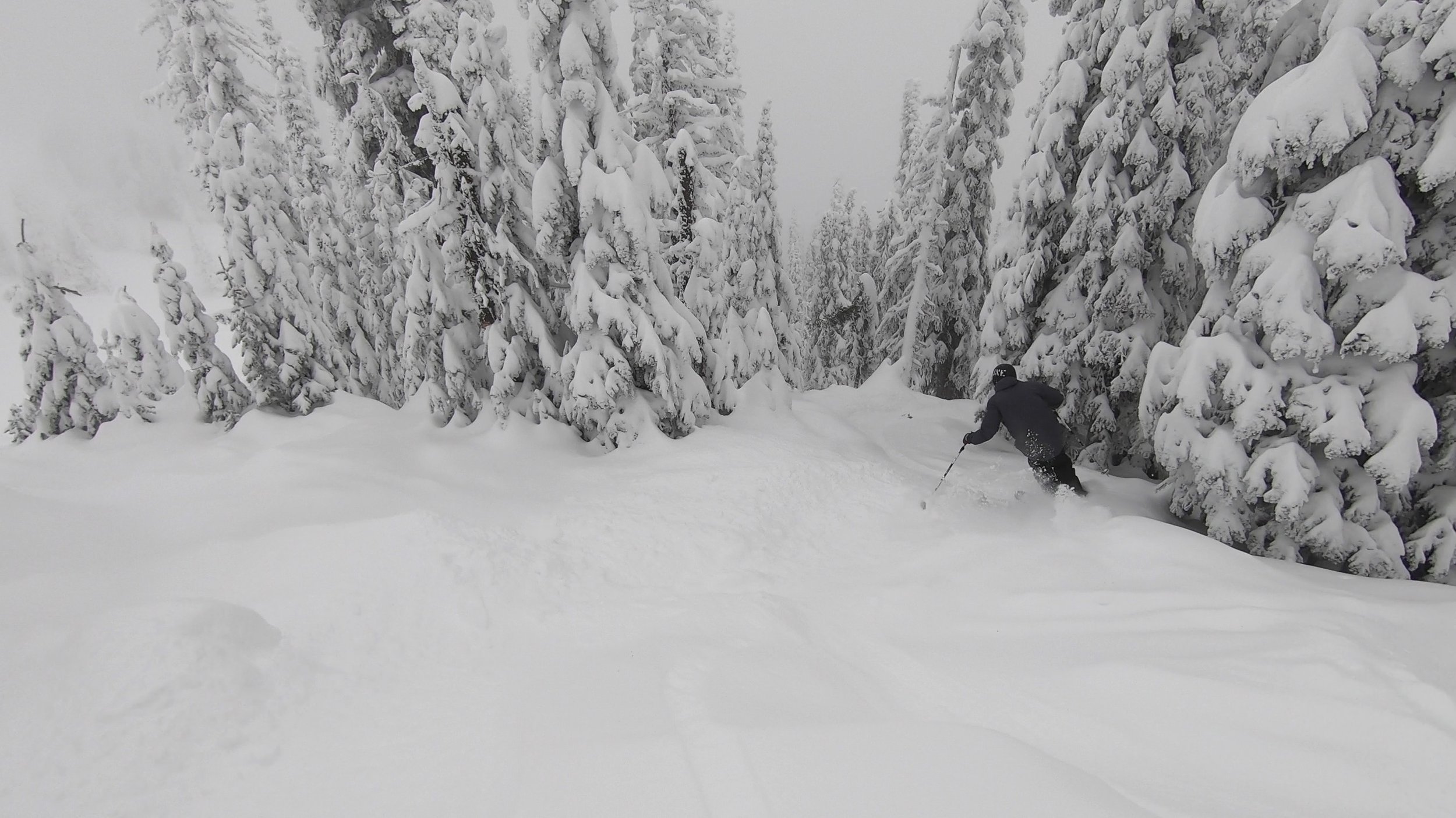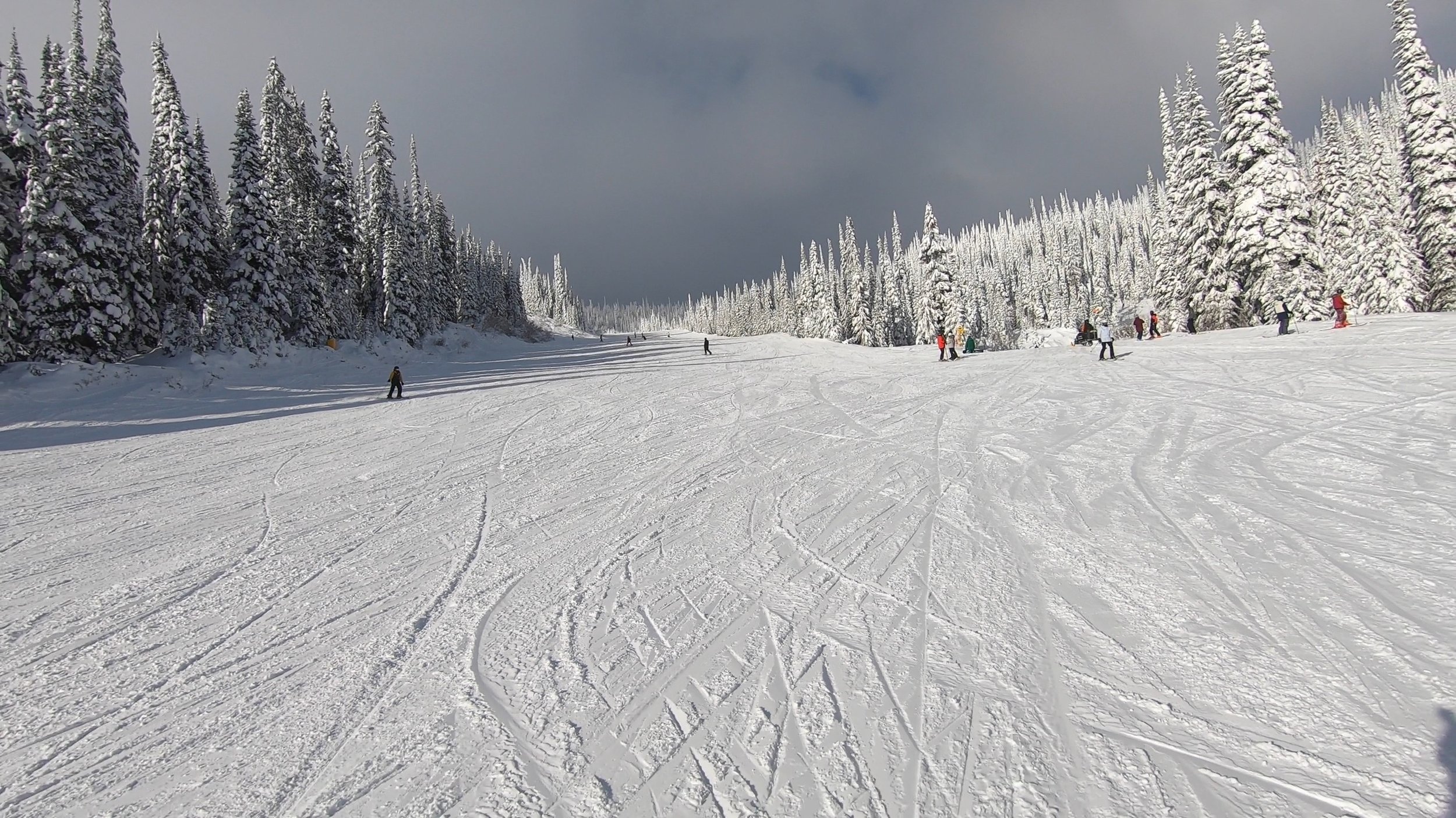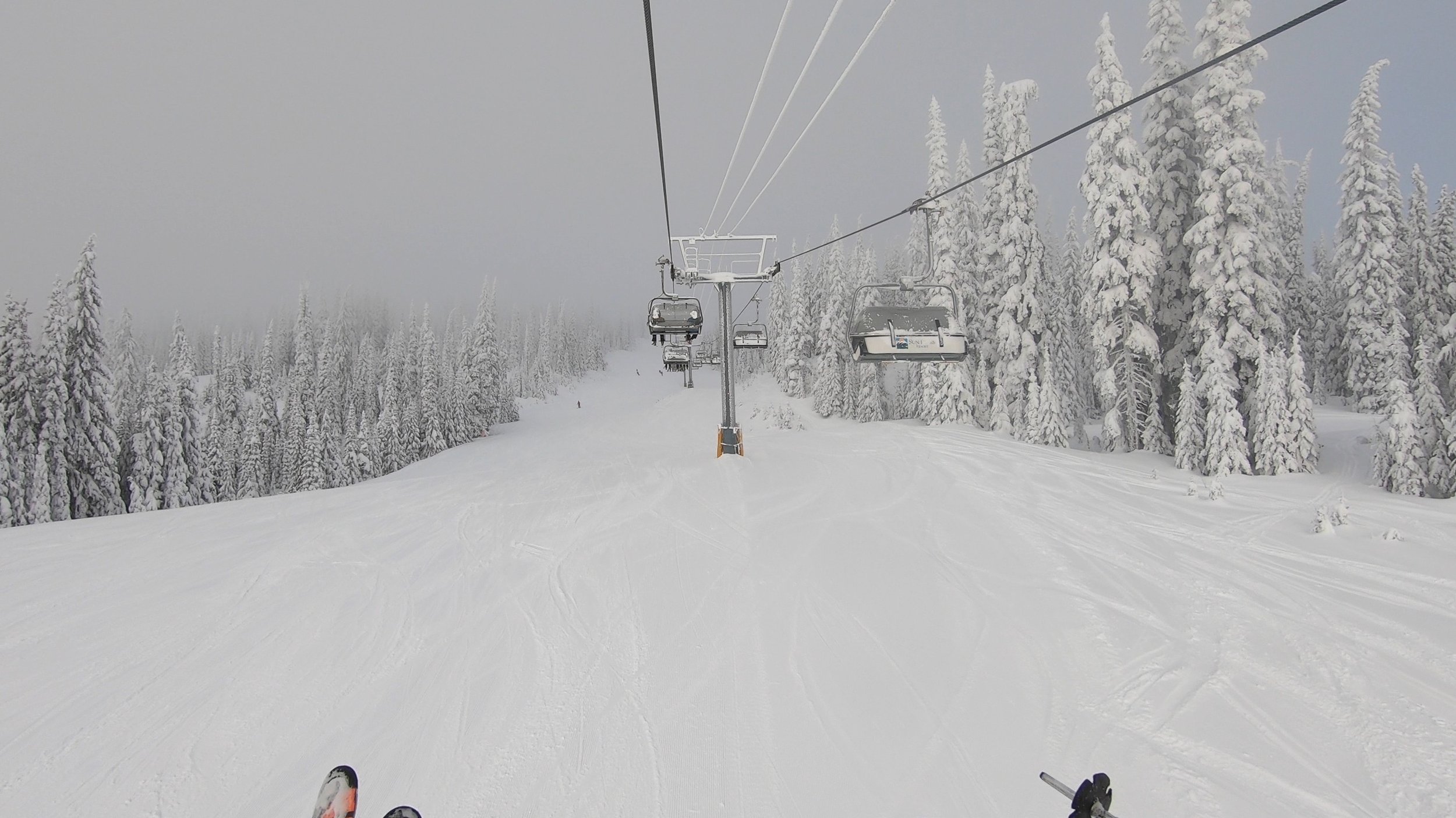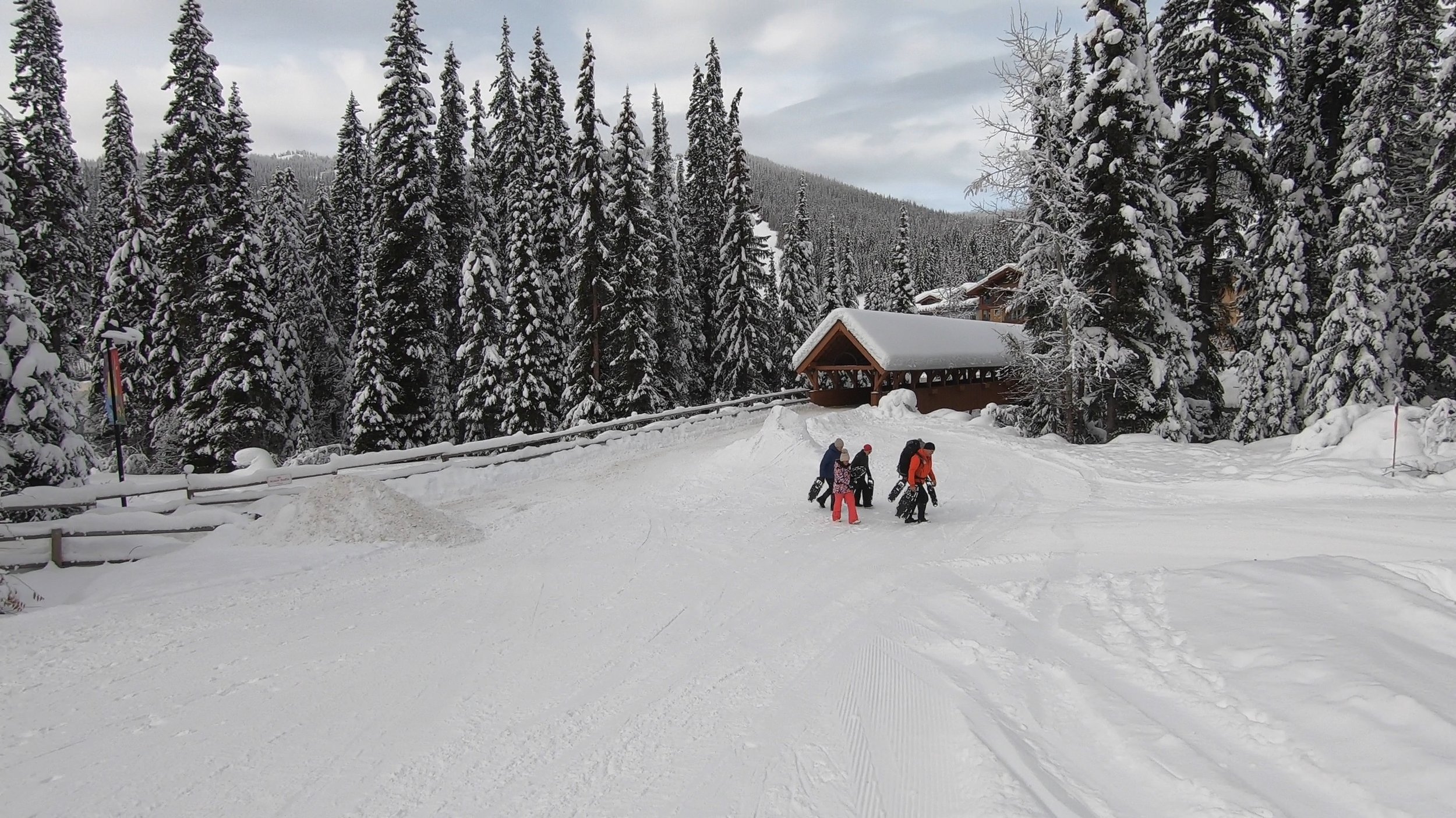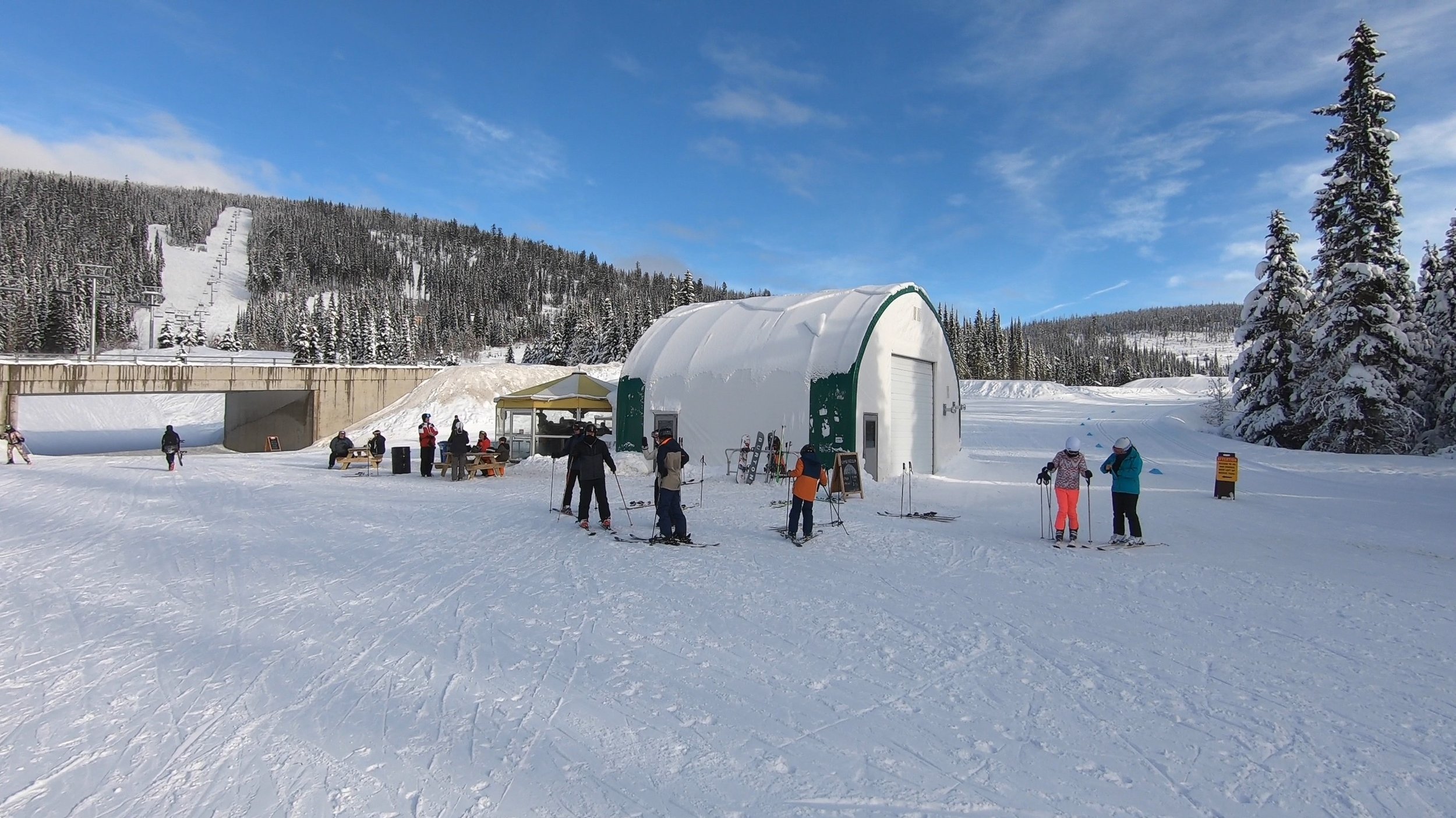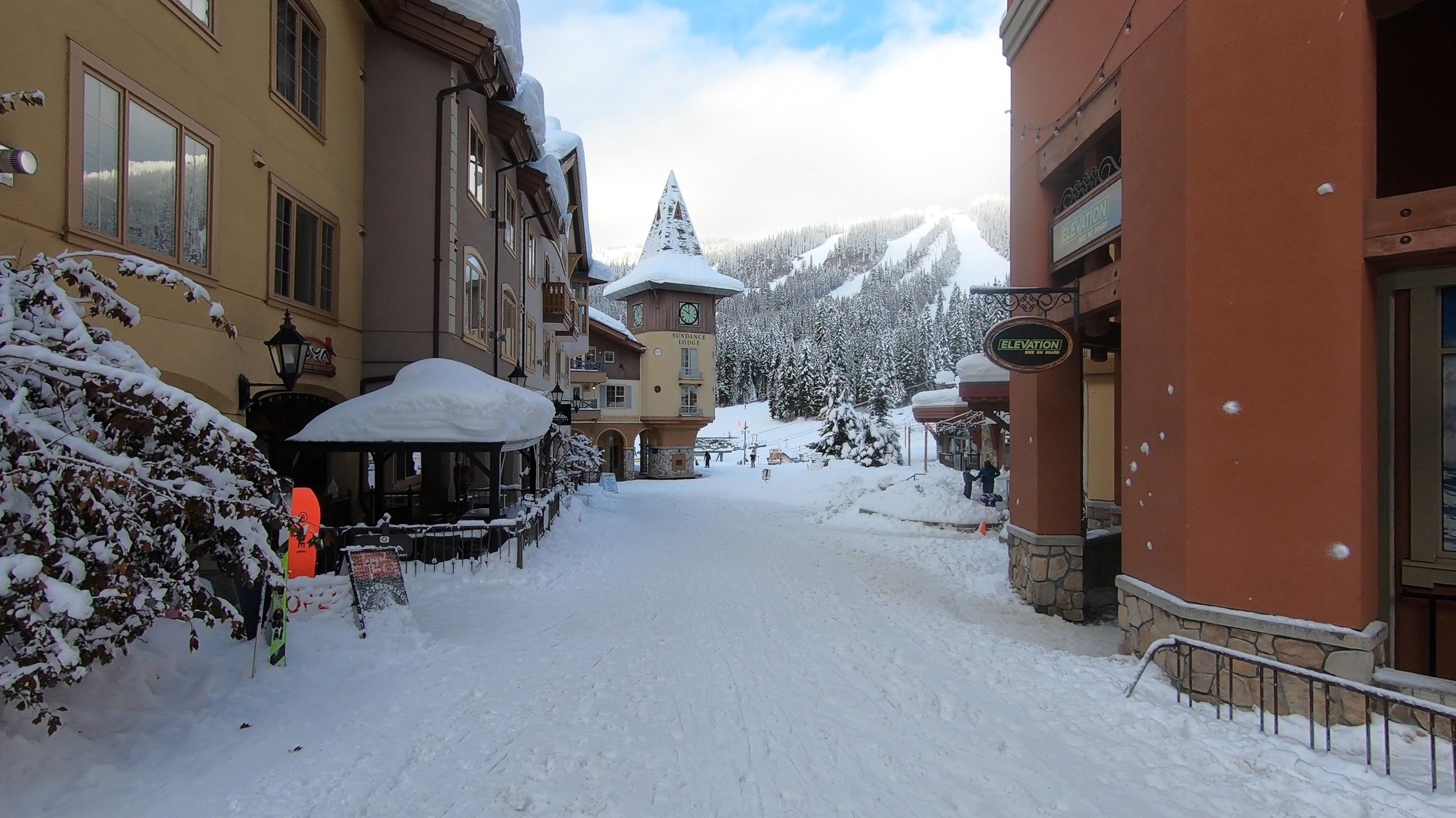Mountain Review: Sun Peaks
MOUNTAIN SCORE
CATEGORY BREAKDOWN
See our criteria8
Snow:
8
Resiliency:
9
Size:
7
Terrain Diversity:
6
Challenge:
5
Lifts:
8
Crowd Flow:
4
Facilities:
6
Navigation:
7
Mountain Aesthetic:
GOOD TO KNOW
1-Day Ticket: $78-$110 USD ($105-$149 CAD)
Pass Affiliation: Ikon, Mountain Collective
On-site Lodging: Yes
Aprés-ski: Limited
Nearest Cities: Kamloops (45 mins), Vancouver (5 hrs), Seattle (6 hrs)
Recommended Ability Level:
+ Pros
Massive footprint
Impeccable grooming
Convenient ski-in/ski-out base village
Modest crowds
Ticket value
– Cons
Relatively ordinary footprint for the size
Limited out-of-base facilities
Grueling 21-minute ride time up Burfield Quad
Difficult to get between Mt. Tod and Mt. Morrisey sides
Ease of out-of-province travel
MOUNTAIN STATS
Lifts: 13
Trails: 138
Beginner: 10%
Intermediate: 58%
Advanced/Expert: 32%
Mountain Review
Looking to plan a trip to a massive ski resort destination? Chances are you haven’t thought of Sun Peaks, which flies significantly under the radar but boasts a monumental 4,270 acres of terrain and trails for all ability levels.
This Interior British Columbia resort is incredibly remote, so is it worth the trek to get there? Well, the resort offers some standout traits, but a couple of factors hurt its case as a worthwhile destination vacation.
Ski and Snowboard Terrain
Sun Peaks’s footprint may be massive, but it’s relatively plain versus many other Western Canada ski resorts. There are certainly plenty of trails to choose from, but in many cases, neighboring runs feel quite similar to one another, sharing the same fall line and comparable views.
Sun Peaks is also a much more family-friendly and below-treeline-oriented resort than many competitors, which means a lot of its runs lack the particularly distinctive characteristics that help other regional mountains stand out. That said, some resort areas do offer pretty unique glade, near-treeline bowl, and expert terrain.
Sun Peaks’s considerable acreage comes more from its breadth than its height, and while the resort’s 2,900-foot vertical drop is nothing to scoff at, it’s not nearly as substantial as that of the best-known destinations in British Columbia.
Sun Peaks’s trails are more mellow and homogenous than many British Columbia competitors.
Resort Layout and Aesthetic
Sun Peaks essentially spans two resort sides—the south-facing Mt. Tod side, which consists of the Tod, Sunshine, and Orient zones, and the north-facing Mt. Morrisey side, which hosts a single terrain zone of the same name. Unlike most other resorts with different aspects, Sun Peaks’s two opposing sides actually face each other, meaning you have a pretty cool birds’ eye view of various other ski slopes on almost every run. And while this view can get somewhat monotonous after a while, as you’re pretty much looking down into the same valley no matter where you are at the resort, the resort’s unique snow-crusted trees during especially cold times, also known as snow ghosts, help keep the visuals interesting.
Sun Peaks’s two resort sides face one another, and the snow-crusted trees make for a unique feel.
Family-Friendliness
If family-friendliness is what you care about, Sun Peaks is hard to top. The resort’s grooming is top-notch, and combined with modest crowds and the extensive trail network, guests can effortlessly carve corduroy lines all day. The fairly similar runs bring benefits when it comes to progression, and if you’re trying to level up from beginner to intermediate, or intermediate to advanced, you can progressively try out runs next to one another. And thanks to Sun Peaks’s multitude of terrain exposures, guests can follow the sun to ski or ride on the most comfortable cruisers on days when it’s clear.
TRAIL MAP
Snow Quality and Weather
Sun Peaks sees quite a lot of sunny days throughout the core winter, but it also sees its fair share of overcast ones. The resort is prone to inversions, which can result in fog in high-alpine areas. If you stay for a week, chances are you’ll get at least one or two days of sun, and the later in the winter you go, the sunnier it gets.
Sun Peaks’s less comfortable weather days do give way to decent natural snowfall. This being said, the resort’s overall snowfall totals aren’t as strong as many Interior British Columbia competitors, and massive powder days don’t come quite as often as one might expect. Much of the resort faces south, but it’s usually just cold and overcast enough to allow for decently strong snowpack preservation—although conditions can get crummy after a few days with no new snow.
Sun Peaks sees high-quality snow accumulation each winter, although it doesn’t see quite the same quantity as some competitors.
Temperature and Cold Spells
Unfortunately, one element that Sun Peaks does share with its Interior BC brethren is the presence of occasional extreme cold spells. For a couple of days each winter, temperatures can drop as low as -30°C, or -22°F. While Sun Peaks isn’t the most wind-exposed resort out there, these temperatures result in conditions that won’t be enjoyable for just about anyone. At least during other times of the winter, Sun Peaks’s temperatures do tend to remain a bit warmer than other Interior BC destinations.
Sun Peaks offers impeccable grooming, with beginner and intermediate trail options across all resort areas.
Beginner Slopes
Sun Peaks is the rare mega-resort that’s good for beginners. The mountain might be the biggest one we’ve reviewed that offers an easy way down from every chairlift (although this likely will not continue to be the case when West Bowl lift service reopens in 2024), allowing for a diverse range of gently-sloped trails across the entire footprint. Most terrain pods have one or two green runs, but beginners should be sure to spend time in the Sundance and Orient zones for the most novice-oriented terrain.
RECOMMENDED SKIS FOR SUN PEAKS
NOTE: We may receive a small affiliate commission if you click on the below links. All products listed below are unisex.
Recommended intermediate ski
Recommended advanced ski
Recommended glade ski
Recommended powder ski
Intermediate Slopes
More than half of Sun Peaks’s terrain is rated as intermediate, and that’s the demographic that will arguably enjoy the best experience here. The resort specializes in moderately-pitched groomed cruisers, including some really cool glade terrain across multiple areas. Sun Peaks’s uppermost elevations include some short intermediate bowl terrain zones, and guests will especially appreciate the lightly-spaced trees and wide-open slopes of the Crystal and West Bowl zones. One important caveat—through at least 2024, Sun Peaks’s West Bowl will not offer direct lift service.
Advanced and Expert Terrain
While not exactly designed for experienced guests to the same extent as some competitors, Sun Peaks does offer some great advanced and expert terrain. Single-black advanced terrain spans multiple areas, with steep, below-treeline trails off Sunburst and the Morrisey backside, the expansive Peak-A-Boo glade trail off Sundance, and lightly-gladed bowl terrain served by Crystal and Burfield. While a sizable portion of Sun Peaks’s advanced runs remain ungroomed, several receive grooming on a regular basis.
While it’s not the most extreme resort in the world, Sun Peaks does offer a range of both groomed and ungroomed advanced and expert runs.
None of Sun Peaks’s terrain is truly extreme, and double-black terrain only makes up a handful of runs at the resort. But there are a few expert terrain zones that will keep tenured skiers and riders busy. The Crystal chair hosts a few seriously steep, obstacle-riddled double-black runs, while the Static Cling run might be home to the steepest consistently groomed pitches at the resort. The lower half of the Burfield zone, often referred to as “Bottom Burf”, hosts some notably long, consistently pitched ungroomed expert runs; locals often swear by this terrain, but their lower elevation and south-facing aspects can make for variable conditions.
For an especially adventurous experience, guests can hit up the hike-to Gil’s and Skunk areas. These open, lightly-gladed runs take about 15-20 minutes to reach depending on your fitness. These zones don’t last super long and aren’t more technical than other advanced runs, but they hold snow very well. One thing to note: Sun Peaks’s ski patrol is fairly conservative with opening these hikes, and they’re often closed due to avalanche conditions.
Sun Peaks is home to a very strong terrain park setup, with features ranging from small to extra-large.
Terrain Parks
One place where Sun Peaks stands out is in its terrain park setup. The resort features an extensive build across the entire Sundance Express lift line, with three distinct zones ranging from beginner to expert and featuring a unique selection of boxes, rails, and jumps.
Sun Peaks also features a beginner terrain park off its short Village Platter surface lift. This area uniquely offers twilight skiing and stays open until 7pm on a daily basis.
Lifts
Sun Peaks boasts decently modern lift infrastructure, although the setup involves a few notable drawbacks. On the plus side, the resort’s primary lower-mountain areas, including Sunburst, Sundance, and Morrisey, are served by high-speed quads. The Sunburst Express comes with bubbles, which especially come in handy on cold or overcast days.
Sun Peaks’s Sunburst Express lift features bubbles, which especially come in handy on cold or stormy days.
That said, a few of Sun Peaks’s terrain zones are held down by slow, fixed-grip lifts. This is defensible in the cases of the Orient and Crystal lifts, which service high-alpine or secondary mountain pods and don’t involve particularly lengthy ride times. However, Sun Peaks bears the odious distinction of hosting the longest fixed-grip chairlift on the continent, if not the world: the Burfield Quad. This 9,500-foot-long quad spans the entire vertical of the resort and takes a grueling 21 minutes to ride, making it not just the longest chairlift ride at Sun Peaks, but probably any North American ski resort. You know it’s bad when the resort offers a shuttle bus from the base of that lift to other mountain areas.
To its credit, Burfield does have a mid-station, so you can get off about 12 minutes in if the ride feels especially miserable (you can also load at the mid-station to lap the upper part of the lift line). But the mid-station doesn’t offer any terrain for beginners—and all intermediate terrain, as well as any terrain that allows guests to end up anywhere besides the bottom of the Burfield chair again, involves somewhat of a cat track. The Burfield chair is best enjoyed by getting on or off at the mid-station and lapping the lower-mountain double-blacks or high-alpine Top of the World terrain; otherwise, there’s very little reason to take this lift unless you absolutely have to.
At 9,500 feet long, the Burfield Quad is the longest fixed-grip chairlift in North America. It takes a grueling 21 minutes to ride this lift in its entirety.
Current State of West Bowl
We have to mention one glaring Sun Peaks resort area that currently doesn’t have lift service at all—the high-alpine West Bowl. This wide-open intermediate terrain zone had a dedicated t-bar until 2020, but this surface lift was subsequently removed and the area has since been hike-to only. Guests will still need to hike to the top of West Bowl for the upcoming 2023-24 season (and can still access a small portion of its terrain via the Burfield and Crystal chairs), but for 2024-25, the resort plans to complete a brand-new detachable lift here.
RECOMMENDED SNOWBOARDS FOR SUN PEAKS
NOTE: We may receive a small affiliate commission if you click on the below links. All products listed below are unisex.
Recommended intermediate board
Recommended advanced board
Recommended expert board
Recommended powder board
Crowds
Sun Peaks is a great option if you’re looking to escape the crowds or low-capacity uphill setups of the other resorts in the province. While modest lift lines can build up at the Sunburst and Sunshine lifts on the busiest days, other chairs rarely see any notable waits. Each lift serves a dedicated purpose, and there aren’t any notable on-mountain chokepoints.
Navigation
Sun Peaks’s on-mountain layout results in some annoyances when it comes to getting around the resort. The Mt. Tod and Mt. Morrisey sides are essentially separate mountain areas, and to get between them at the Village Base, guests will have to take off their gear and walk across a road. To make matters more complex, getting to the Morrisey Express chair after crossing the road involves a ride up a short platter lift first. Guests can get to the Burfield chair from some Morrisey trails, but they also involve crossing this same road—and while unmarked by the resort, they all involve some uphill catwalking as well.
To get between the Mt. Tod and Mt. Morrisey resort sides, guests must either ski or ride all the way to the eastern end of the resort or take off their equipment to cross a road.
Luckily, Mt. Tod and Mt. Morrisey do have a brief trail connection on the far eastern end of the resort, and guests can access the Morrisey lift by taking a ride up the Sundance chair and going down the East Village Ski Way connector trail. Guests can also ski or ride back to the Mt. Tod side using the Orient lift. However, these routes can be fairly roundabout, do still involve some flat terrain, and are typically more time consuming than going directly from the village. The Morrisey zone also involves cold, north-facing trails and flat, catwalky terrain near the top—which, combined with the difficult access, makes for much emptier slopes than in other mountain areas. At least if you stay on the Mt. Tod side, the slopes are a lot more straightforward to navigate.
On-Mountain Facilities
Sun Peaks’s on-mountain lodges are fine but do leave a bit to be desired. The only true mid-mountain lodge is at the top of the Sunburst lift, and while the bottom of Morrisey has an umbrella bar, it has very limited seating and slow service. The Village Base does have an extensive network of eateries, ranging from a grab-and-go cafeteria to several fancy restaurants; however, the cafeteria isn’t sufficiently advertised, meaning uninformed guests may mistakenly suppose there aren’t any cheaper village food options.
This umbrella bar is the only on-mountain lodge on the Mt. Morrisey side.
Pass Affiliations
Sun Peaks is a partner on the Ikon Pass, and the resort comes with five to seven days of access with or without holiday blackouts, depending on the pass tier. Guests can also access Sun Peaks via the Ikon Session Pass, which comes with two-to-four days of cumulative access at 40 different destinations.
Sun Peaks also comes with two-day access on the Mountain Collective Pass, as well as two days of reciprocal access if you happen to have a SilverStar or Whistler season pass.
Getting There
Sun Peaks sits in an incredibly remote location, far away from the nearest major airport. The resort is 50 minutes away from Kamloops, but the airport there only offers direct flights from Vancouver, Edmonton, and Calgary, meaning those flying in from other areas will be in for convoluted itineraries spanning at least one or two connecting flights. The next closest airport is Kelowna, which offers somewhat better domestic options, but flights in and out of the United States are still limited. A few private shuttle services exist between the Kamloops airport and the resort.
If you want to drive to Sun Peaks from a regional city, the resort is about 5 hours from Vancouver and 6 hours from Seattle when road conditions are clear—but this is by no means a given, since the highways connecting Sun Peaks with these cities are subject to significant weather and snow events throughout the winter season.
Several on-site accommodations, including the Sun Peaks Lodge pictured here, offer ski-in/ski-out access.
Lodging and Parking
A standout Sun Peaks trait is the quality and quantity of slopeside lodging. The resort boasts a very convenient ski-in/ski-out slopeside village, with several onsite condos, hotels, and private chalets. If you have an RV, Sun Peaks provides dedicated parking near the base of Mt. Morrisey.
Speaking of parking, finding a spot is never a serious issue at Sun Peaks. The mountain offers ample spots and doesn’t charge to park in any of its lots.
For those who don’t want to stay on site, more economical options can be found about 45 minutes away in the town of Kamloops.
Aprés-ski
Despite its base village, Sun Peaks is more of a family-friendly mountain than anything else and doesn’t offer the most extensive nightlife vibe. While the Village Base is quite convenient, it’s not as large as some competitors and stays quiet on weekdays. That said, the village is still fairly lively during peak times, and a handful of bars offer solid happy hour vibes after the slopes close. And when it comes to dinner, the village features some great restaurants.
Sun Peaks’s charming base village boasts plenty of restaurants and family-friendly activities.
Verdict
When it comes to an extensive, reliable, and family-friendly footprint with minimal lift lines, Sun Peaks is hard to beat. But other resorts offer more unique footprints, higher snow totals, and more challenging terrain—and for those looking for a fly-to vacation, Sun Peaks may not offer enough distinctive qualities to make it worth the travel.
Pricing
Sun Peaks’s incredibly remote location may make access an issue, but if you can make it there, lift ticket rates are quite reasonable, topping out at just $149 CAD, or $110 USD with today’s exchange rates. The resort may not be for everyone, but it’s hard to argue the value for what it provides.









